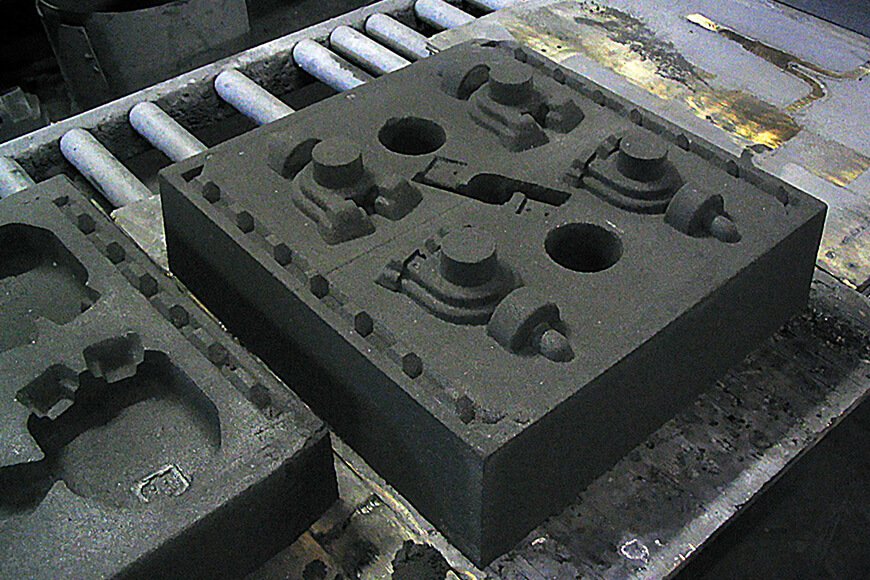Chromite sand AFS45-55/AFS50-55 properties
Chromite sand AFS45-55/AFS50-55 is a foundry sand for casting molding sand, facing sand, and core sand. It is composed of chromium, iron, and oxygen (chemical formula FeCr2O4). Foundry chromite sand obtains Chromium oxide content min 46%. Its main performance properties are as follows:


1. Refractoriness
The molding sand and surface sand used for casting must withstand the high temperature of molten iron or steel pouring. Casting sand with low refractory temperature makes it easy to adhere to the surface of the casting. That results in low yield of the casting and increasing casting costs. The melting point of chromite sand AFS45-55/AFS50-55 is 2180 °. And solid-phase sintering occurs above 1800 °. For the casting of metals and stainless steel, chromite sand has strong applicability to resist heat.
2. Chemical stability
For casting facing sand and core sand that come into direct contact with molten steel, chemical stability is very important. If they react with the molten metal, it is easy to cause chemical sand sticking, such as “glaze” or double skin casting defects. High-quality chrome ore sand has strict requirements for SiO2 in the sand. Water washing and magnetic removal process control the silica (i.e. yellow skin) and sediment impurities. That can prevent impurities from reacting with the casting.
3. Strength of molding sand
The strength of molding sand is closely related to the strength of the original sand. In order to prevent collapse and deformation of the molding sand during the pouring process, the casting sand must have a certain resistance strength. On the one hand, the hardness of chromite sand is high, with a hardness of 5.5-6.0. It is close to that of silica sand. It can also maintain high strength and breathability when working with binders such as alkaline phenolic resin and water glass. On the other hand, the thermal expansion coefficient of chrome ore sand is very low, and it can be used for molding cores to prevent deformation of the sand core caused by shrinkage of molten metal. Thereby it prevents tearing and cracking of castings.
4. The particle uniformity and shape
The compaction strength and permeability of molding sand are closely related to the particle shape and size distribution of the original sand. During the production process, the particle size standard of chromite sand AFS45-55/AFS50-55 follows the AFS fineness requirements of the American Foundry Society. Avoiding the negative impact of sand particle size range being too large or too small on casting.
5. Thermal conductivity
The facing sand for casting directly contacts the molten metal and has a significant impact on the solidification and cooling process of the casting. The most important property of chromite sand compared to other casting sands is its superior thermal conductivity. Especially for thick wall castings and large castings, chromite sand gets superior performance. The use of chrome ore sand can improve the cooling speed of castings. In the meantime, it can improve the consistency of casting solidification, and avoid cracks and shrinkage caused by uneven heating and cooling.
In summary, chromite sand has high compatibility with various casting processes for carbon steel, stainless steel, cast iron, cast steel, alloy steel, and other castings.


















